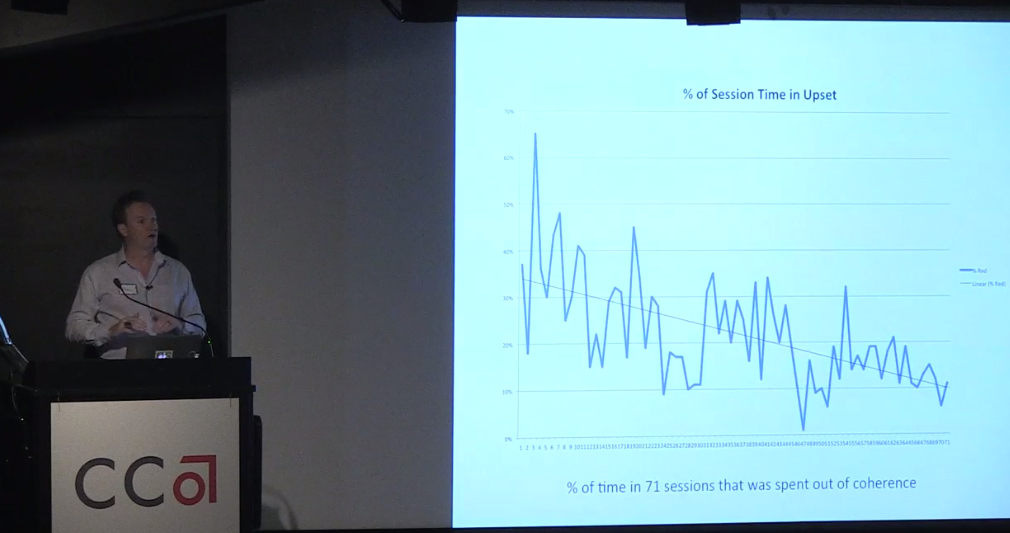Paul LaFontaine: Upset Every Other Minute
Ernesto Ramirez
September 23, 2014
How many times during the course of the day do you find your mental state drifting into negativity, feeling like you’re lost, or just plain stressed? How could you even keep track of this, and why would you want to?
What Did Paul Do?
Paul LaFontaine has been tracking what he calls “upsets” to better understand himself, the way he works, and to see if he can improve his mental and physiological response and recovery.
Upsets are something physiological that were happening beneath the surface, and they’re trackable. It didn’t have to be emotional, but there had to be a signal. This project is part of an longer ongoing study. Before this current iteration I manually logged over 3,000 upsets and what I found is that most of my upsets were self-induced. I’d be in a calm environment, but then become upset about something. I wanted to use technology because I was afraid of bias and I know I was missing some upsets.
How Did He Do It?
I used the HeartMath EMWave2 that measures heart rate variability and indicates when you’re in and out of coherence. When I was out of coherence I captured that as an upset. I would stop what I was doing and use an audio recorder to keep track of the time, how long I was upset, the reason, and what method I used to recover. I tracked 71 sessions (each session was 25-45 minutes) totaling 42 hours of tracking time. I logged 1292 upsets during this period.
What Did He Learn?
Paul analyzed his data and found some very interesting insights about his upsets, his reasons for being upset, and the effectiveness of his recovery techniques.
I found that I was triggering an upset every 2 minutes. My wife said something must be wrong with me, but this stayed relatively constant through the tracking period. I started to think of it like skiing a mogul course. The moguls didn’t move, it was about how effective I could move through them. And, dealing with upsets is like playing whack-a-mole. They come fast and furious and every second counts.
For recovery I was able to find that my most effective technique was breathing. By returning to six breaths per minute routine I was able to improve recovery time from 33 seconds to 17.8 seconds. It was the primary way I could remove myself from being upset and make myself calmer.
We want to thank Paul for presenting this great QS project at the Bay Area QS Meetup group. Make sure to watch the full talk below to learn more about Paul’s methods and findings, then hop over to his website where you can read about how he tracked his stress during this talk.



